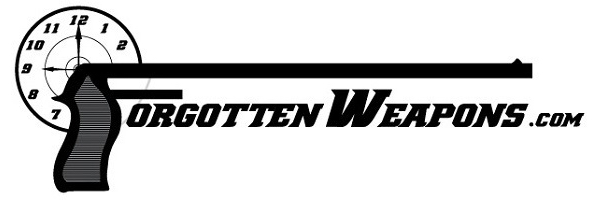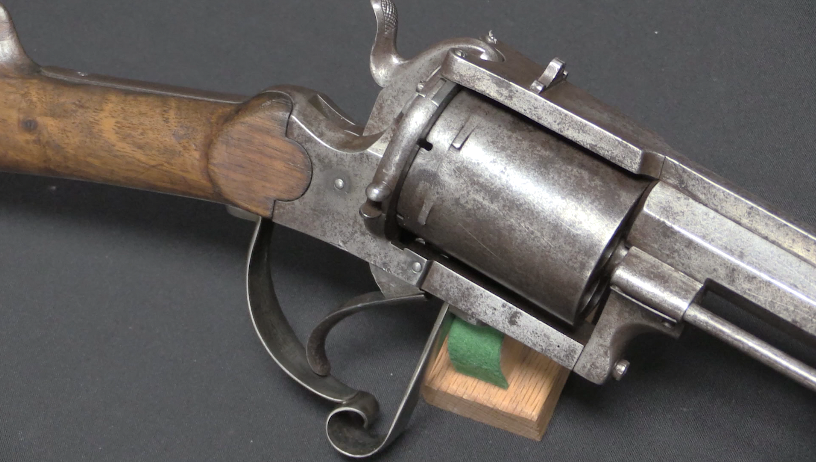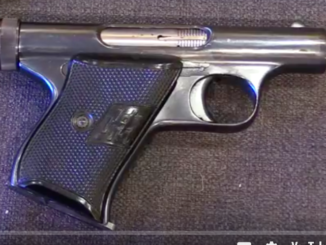Argentina was one of the first countries to adopt Mauser rifles, with the Model 1891. These were replaced by newer Model 1909 rifles a couple decades later, and in 1913 they bought 500 telescopic sights to make sniper rifles. All of them appear to have been put on cavalry carbines like this one, rather than full-length infantry rifles. The scopes were 3x fixed power types made by SOM in France. The mounting system was either developed by the French or later copied by the French, as it is very similar to the late-war WW1 pattern of scope mount used by the French Army on the Lebel (and the Argentine scopes are very similar to the APX 1916 French scopes).
This is a quite rare complete matching rig, with the rifle, mounts, scope, and scope case.




That was very forward looking for the time.
That would certainly be a gem In anyone’s collection.
The US adopted the Schneider 155mm howitzer as its standard medium artillery (divisional general support battalions and corps separate artillery battalions) and fielded them well into WW2. Some were provided to the British via Lend-Lease https://en.wikipedia.org/wiki/Canon_de_155_C_mod%C3%A8le_1917_Schneider
The case made of Argentine leather. Argentina supplied much of Europe’s beef. The Gauchos of the Pampas and the Cowboys of the Plains would have understood each other well.
“Cattle were first brought to Argentina in 1536 by Spanish conquistadors. Due to the geography of the Pampas and a small national market, the cattle multiplied rapidly. Railway building within Argentina and the invention of refrigerated trains and ships in the late 19th century made an export market and Argentina’s beef export industry started to thrive. The flipped seasons between the Northern and Southern Hemispheres meant that Argentine beef came onto the market at a time of year when beef was less at hand in the Northern Hemisphere, which further lifted the potential export market in the United States and European markets.
Argentine beef and its production have played a major part in the culture of Argentina, from the asado to the history of the gauchos of the Pampas. Landowners became wealthy from beef production and export, and estancia owners built large houses, important buildings in Buenos Aires and elsewhere, and contributed to politics, philanthropy, and society. The agricultural show La Rural each winter in Buenos Aires became a major part of the social season since it started in 1886.”
Considering how very worn the rifle is and how pristine the scope and base are, even on sharp edges, it’s pretty clear the two were joined quite recently. SOM seems to have first realized the advantage of being able to read the range scale from a firing position, unlike all the scopes with the markings on top of the knobs. And the first to have positive indexing of the range knob. So maybe these features inspired the design of the No.32 scope? Another interesting feature is the raised lips which could be filed down to collimate the scope; perhaps this inspire the Kochetov design? The large number of Soviet agents and sympathizers in France between the wars would have ensured they were kept up to date on any French innovations. Windage adjustment is obviously by rotating the prism in the objective, as per the British Model 1918 scope. Only significant defect is the possibility of reflection off the exposed objective lens, but perhaps a rubber hood was provided?